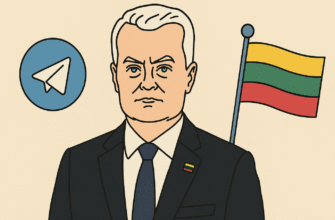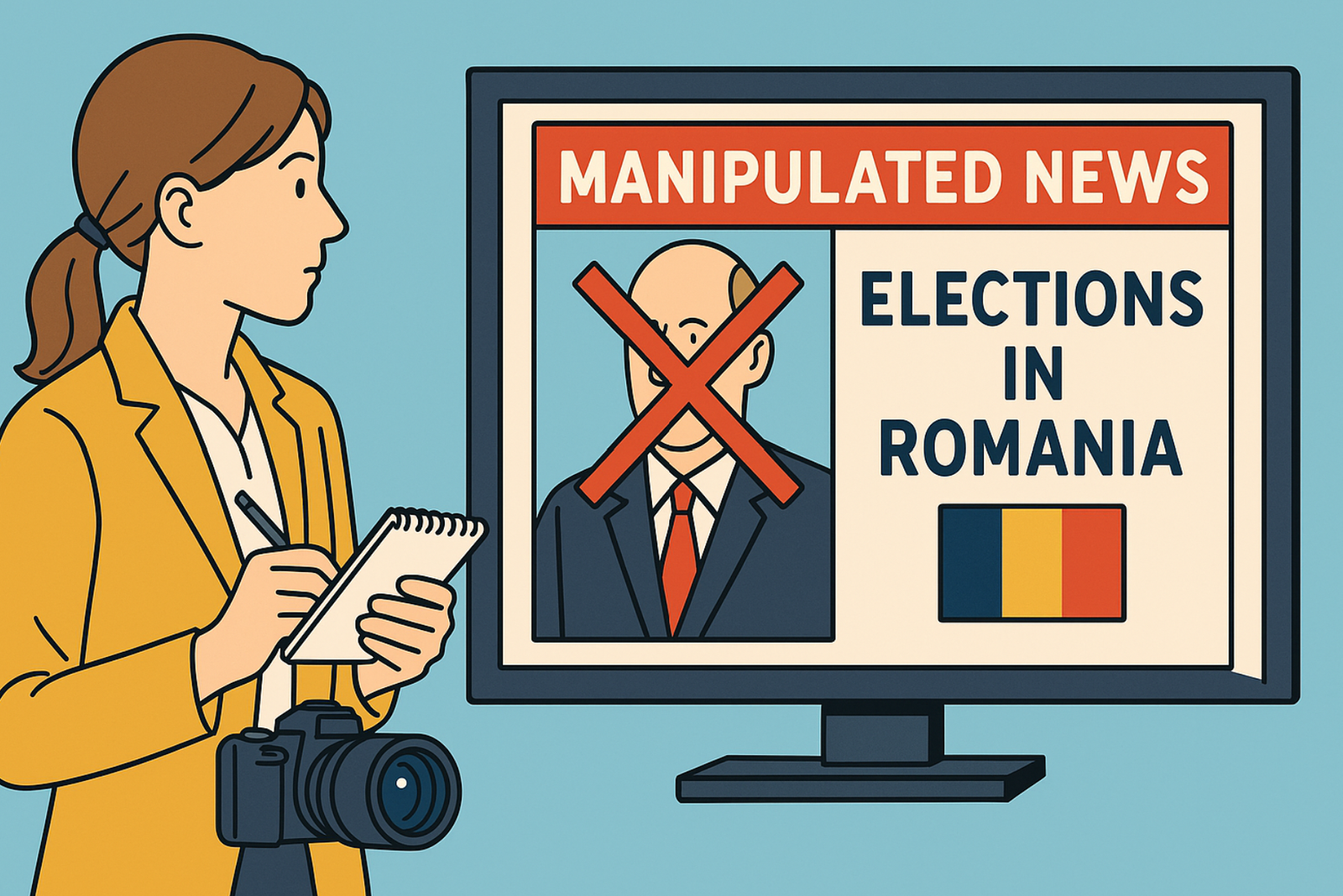On January 20, 2025, an interview with Grigory Azarenok, considered one of the key Belarusian propagandists and working for the CTV channel, was published on the YouTube channel “Ostorozhno: Sobchak.”
This video instantly hit the YouTube trends in Belarus as early as January 21.
As with Roman Protasevich’s interview, its popularity is due to its provocative nature and the fact that it involves all key players in the Belarusian information space. Its emotional appeal, intrigue, and associative imagery make it attractive to both supporters of the government and its critics.

YouTube trends are analyzed using tools provided by Oxylabs under Project 4β.
Various tools based on LLM models were used to transcribe and analyze the entire interview, which lasts almost 2 hours.
The video itself:
Below are the results of the analysis, hypotheses on political applicability, and a general visualization.
CONTEXTUAL ANALYSIS
Overall context of the interview: The interview focuses on discussing political, social, and ethical issues in Belarus, including the role of propaganda, adherence to laws, personal responsibility of journalists, and a critical perspective on the events following the 2020 protests.
Roles and positions of participants:
Grigory Azarenok: A leading propagandist actively defending Alexander Lukashenko’s policies, often resorting to aggressive rhetoric and justifying violations of the law under “emergency conditions.”
Ksenia Sobchak: A journalist seeking to clarify the opponent’s position through questions highlighting contradictions in his statements and actions.
Interaction dynamics: The interview is built on sharp polemics, with elements of irony and confrontation. Sobchak attempts to expose inconsistencies in Azarenok’s logic, while he actively defends himself using emotional arguments.
Key topics and their development:
- Journalistic ethics.
- The use of violence and justification of repressive measures.
- Support for an authoritarian regime.
- Anti-Semitism and nationalism.
- The influence of propaganda on public opinion.
VISUALIZATION
Word Cloud
Illustrates the most frequently used words in the text, visually highlighting their frequency with font size.

Insights:
- The words “person,” “Lukashenko,” “Belarus,” and “people” emphasize the humanitarian aspect of the rhetoric.
- Frequently used words like “really,” “let’s,” “can” indicate a rhetorical style focused on audience engagement and persuasion.
- The presence of words like “law,” “president,” and “say” reflects an emphasis on legitimizing authority.
Word Frequency
Top 20 words by frequency

Insights:
- The high frequency of “Lukashenko” and “people” highlights the interview’s focus on the leader and the public.
- Recurring words like “know,” “understand,” and “say” suggest an attempt to create an illusion of sincerity and personal involvement.
Tri-gram Frequency
A graph showing the most frequently occurring trigrams (three consecutive words).

Insights:
- Frequent trigrams like “killer of peaceful civilians” and “law violation violation” indicate emotionally charged and propagandistic constructions.
- Trigrams related to “Russian national unity” and “honest honest honest” reflect an attempt to build trust through repetition and nationalist rhetoric.
Word Connection Network
A diagram showing relationships between frequently used words. Nodes (words) are connected by lines representing their co-occurrence in context.

- Central nodes like “Lukashenko,” “law,” and “Belarus” highlight the interview’s key themes.
- Words associated with repressive rhetoric (“special services,” “killer,” “violation”) emphasize the justification of violent actions in the context of stability.
- Nodes tied to history (“great,” “patriotic”) appeal to nationalist and patriotic sentiments.
These visualizations emphasize the main strategies of the interview:
- Justification of authority and repressions through an emphasis on “stability” and “threats.”
- Mobilization of patriotism and national identity by referencing “Belarus,” “Lukashenko,” and “national unity.”
- Emotional manipulation using fear-inducing words (“killer,” “threat”) and repetitions to create an illusion of sincerity.
LINGUISTIC ANALYSIS
- Rhetorical techniques:
- Emotionally charged vocabulary: “damn cosmopolitan,” “scum,” “rats.”
- Metaphors and comparisons: analogies with war, comparisons to Hitler and Goebbels.
- Repetitive phrases and constructions: emphasis on serving the state.
- Aggression/submission markers: focus on unconditional loyalty to Lukashenko.
- Manipulative techniques:
- Logical manipulation:
- False dichotomies: justifying repressions through the opposition of “peace and chaos.”
- Shifting the thesis: moving from discussing specific legal violations to global threats.
- Generalization: accusing opponents of betrayal and ties with enemies.
- Emotional manipulation:
- Appeal to fear: threats of “country destruction” without strict measures.
- Creating moral panic: demonizing the opposition.
- Rhetorical strategies:
- Whataboutism: diverting discussions to other countries (e.g., the U.S., Ukraine).
- Discrediting criticism: “all this is nonsense.”
- Demagoguery: exaggerated glorification of Lukashenko.
- Logical manipulation:
NARRATIVE ANALYSIS
- Main narratives:
- Authoritarian rule is justified for maintaining stability.
- The opposition is the enemy of the state, supported by “external forces.”
- Meta-narratives:
- Belarus is a stronghold against “Western chaos.”
- The leader is the symbol of national identity and order.
ANALYSIS OF ACCURACY
- Factual errors: statements about Protasevich recognized as false.
- Information distortion: denial of torture at Okrestina prison.
- Contradictions: acknowledgment of constitutional violations while justifying government actions.
PSYCHOLOGICAL MECHANISMS
- Impact techniques:
- Emotional contagion: emphasis on “internal enemies.”
- Fear creation: scenarios of “country destruction.”
- Target groups:
- Loyal audience supporting the regime.
- Opposition-oriented viewers being discredited.
TEMPORAL DYNAMICS
- Change in rhetoric: increased aggression in response to protests.
- Argument development: from specific issues to the justification of authoritarianism.
CONTENT MARKERS
- Indicators of propaganda:
- Demonization of the opposition.
- Militaristic rhetoric.
- Personality cult of Lukashenko.
- Markers of disinformation:
- False attribution of events.
- Distortion of context.
SPECIAL TOPICS
- Political institutions: Personalization of power: emphasis on Lukashenko as the sole source of order.
- Law enforcement: Justification of violence for “saving the country.”
- International relations: Geopolitical narratives: anti-European rhetoric.
We will now attempt to assess why this interview was published just before the so-called “presidential elections in Belarus,” scheduled for January 26, 2025.
1. Shaping public opinion
- Strengthening the image of the leader: Through the interview, the propagandist seeks to portray Alexander Lukashenko as a strong and irreplaceable leader capable of “protecting the country” from internal and external threats.
- Delegitimizing the opposition: The interview is saturated with discreditation of opposition figures, their actions, and ideas, which might aim to reduce trust in alternative candidates or protest sentiments.
2. Mobilizing loyal population groups
- Consolidating regime supporters: Bright and aggressive rhetoric, appeals to fear of “chaos” and “enemies” are aimed at strengthening the base of loyal voters.
- Creating a sense of danger: Mentions of external and internal threats may be designed to mobilize citizens to maintain the status quo.
3. Demonstrating power
- Asserting control over the information space: Publishing an interview with a leading propagandist a week before the elections symbolizes the dominance of state rhetoric in the media, where alternative perspectives are suppressed.
- Highlighting the inevitability of the outcome: References to the “lack of alternatives” and “popular monarchy” serve to convey that the election results are predetermined.
Thus, the publication of the interview a week before the elections is part of a broad information-political strategy aimed at legitimizing power, suppressing opposition, and managing public opinion.
4. Provoking discussions and diverting attention
- Shifting attention: The interview can distract the public from criticism of the elections and related protests, creating “noise” around debates about the rhetoric and statements.
- Provoking the opposition: Harsh and offensive statements may be designed to elicit a reaction from the opposition, which can then be interpreted as evidence of their “radicalism” or “incompetence.”
5. International positioning
- A message to external observers: The interview serves as a demonstration that the Belarusian authorities are confident in their stance and ready to defend their position on the international stage, even if it contradicts democratic principles.
Thus, the publication of the interview a week before the elections is part of a broad information-political strategy aimed at legitimizing authority, suppressing the opposition, and shaping public opinion.
If we compare the two interviews (G. Azarenok and R. Protasevich), several key aspects of this strategy become apparent:
1. Creating a narrative of the government as a guarantor of stability
- The interviews actively promote the idea that the current regime guarantees the absence of war, stability, and security. Against the backdrop of conflicts in neighboring countries, this becomes a powerful argument for mobilizing the electorate.
- The rhetoric of “saving Belarus” creates an atmosphere of fear about alternatives and justifies repressive measures.
2. Discrediting the opposition
- Azarenok emphasizes the betrayal and mistakes of the opposition, using Protasevich as an example of someone who supposedly recognized his errors.
- Protasevich, in Sobchak’s interview, talks about his “rehabilitation” and attempts to reintegrate into the system, presented as the correct path for others.
3. Propagandist performance
- The interviews are structured to demonstrate the power of the government and its humanity. For instance, the demonstrative “rehabilitation” of Protasevich as a citizen working as a welder is presented as an attempt to legitimize the repressive apparatus.
- Azarenok uses theatrical techniques, such as metaphors about “destroyers” and “tough nuts,” to enhance the emotional impact.
4. Justification of repressive measures
- Both interviews show that repression is presented as a “necessary evil” to ensure order. This aligns with the election rhetoric as a “battle for the country’s survival.”
5. Preparing for foreign policy consequences
- The interviews contain elements aimed at justifying Belarus’ actions to the international community, such as denying aggression against Ukraine and emphasizing sovereignty.
Goals of the publication before the elections:
- Mobilizing the electorate: Emphasis on stability, security, and economic sustainability.
- Discrediting the opposition: Protasevich serves as a “living example” of the failure of opposition ideas.
- Legitimizing repressions: Azarenok’s interview justifies repressive measures as necessary for maintaining order.
- Sending an international signal: Demonstrating loyalty to the regime and confidence in its position to Western critics.
This strategy combines elements of fear, hope, and authoritarian control, making it a powerful tool in the pre-election campaign.
Target audience of the interviews
1. Supporters of the current regime (Lukashenko’s core electorate)
- Goal: Strengthen loyalty and mobilize them to participate in the elections.
- Rhetoric: Azarenok appeals to patriotic and militaristic narratives, using images of “enemies within” and the “protector of the nation.” Protasevich is portrayed as an example of a “reformed enemy,” emphasizing the regime’s humanity and strength.
- Effect: Reinforces beliefs that the government is strong and morally right.
2. Youth and the “digital generation”
- Goal: Capture the attention of a younger audience, for whom YouTube is a primary content source.
- Rhetoric: Attracting viewers through emotionally charged and provocative content. Protasevich’s participation, previously associated with the opposition, sparks interest among those who followed the protests and political developments.
- Effect: Creates a dilemma—whether to view Protasevich as a “traitor” or someone making a rational choice.
3. Skeptical citizens
- Goal: Demonstrate the state’s power and its ability to “re-educate” even the most active opposition figures.
- Rhetoric: Stories about Protasevich’s life after his return create an illusion of opportunities for “rehabilitation” within the system. This targets disillusioned viewers, aiming to reduce radical sentiments.
- Effect: Weakens anti-regime sentiments and fosters the illusion of the regime’s humanity.
4. International viewers following the situation in Belarus
- Goal: Demonstrate the regime’s strength and resilience in the face of international criticism.
- Rhetoric: Azarenok and Protasevich emphasize the “humanitarian” side of the regime, justifying government actions as a way to ensure stability.
- Effect: Reinforces the perception of Lukashenko’s harsh but ostensibly fair policies.
5. Political emigration and opposition-minded viewers
- Goal: Elicit an emotional reaction and undermine their morale.
- Rhetoric: Azarenok’s aggressive statements about traitors and “pseudo-heroes” aim to discredit the opposition and create division.
- Effect: Increases pressure on the opposition through media channels.
Conclusion
These interviews represent a strategic tool for shaping public perception, justifying state actions, and discrediting opposition forces. They highlight the regime’s reliance on emotional manipulation, nationalistic appeals, and controlled narratives to maintain its grip on power, particularly during sensitive periods like the pre-election phase.
Visual Summary
Below is a visualization showcasing the distribution of interview analysis across key aspects:

- Contextual Analysis (85%): This aspect is thoroughly examined, including the general context of the interview, the participants’ positions, interaction dynamics, and key topics.
- Linguistic Analysis (90%): Significant attention is paid to the rhetorical techniques, emotionally charged vocabulary, manipulative tactics, and their impact.
- Narrative Analysis (75%): Coverage is slightly lower here, focusing on main and meta-narratives.
- Accuracy Analysis (60%): This aspect is moderately explored, focusing on identified contradictions and factual distortions.
- Psychological Mechanisms (80%): Key manipulation techniques and their effects on target audiences are highlighted, emphasizing emotional contagion and fear appeals.
- Temporal Dynamics (70%): Changes in rhetoric and argumentation are tracked.
- Content Markers (65%): Indicators of propaganda and disinformation are identified and explained.
- Special Topics (80%): Important political, international, and ideological aspects are included, with room for more detailed exploration of specific topics.
In summary, this strategic analysis of the interviews reveals a multi-faceted approach by the Belarusian regime to influence public opinion and consolidate power. By leveraging emotional appeals, discrediting opposition, and framing itself as a protector of stability, the government reinforces its narrative, particularly during a politically sensitive period such as the upcoming elections. These interviews act as a powerful tool for the regime to solidify its position both domestically and internationally.
This publication was developed by a research team under the leadership of Mikhail Doroshevich, PhD.









